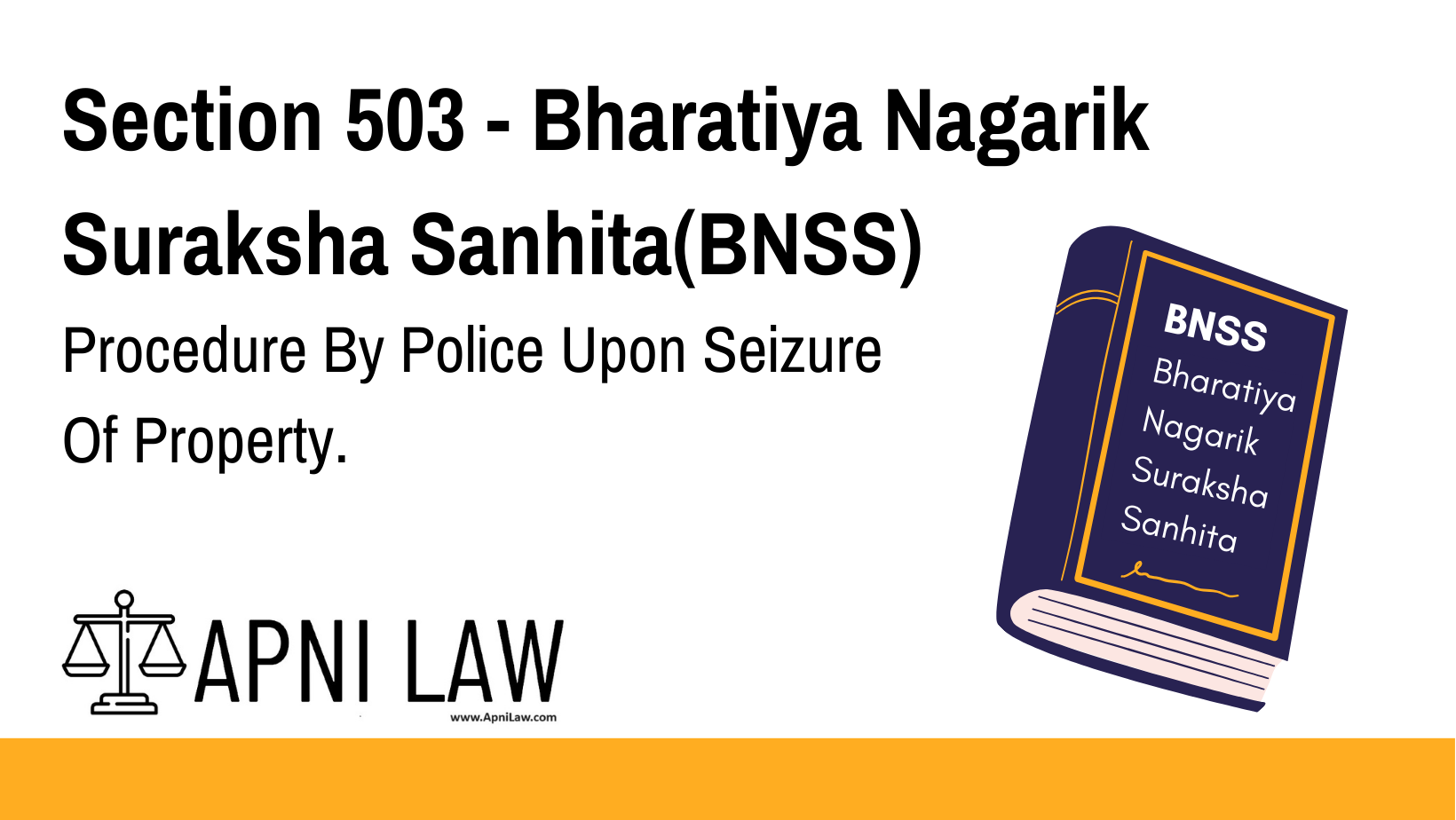Code: Section 503 BNSS
Procedure for Disposal of Seized Property
(1) Whenever the seizure of property by any police officer is reported to a
Magistrate under the provisions of this Sanhita, and such property is not produced before
a Criminal Court during an inquiry or trial, the Magistrate may make such order as he thinks
fit respecting the disposal of such property or the delivery of such property to the person
entitled to the possession thereof, or if such person cannot be ascertained, respecting the
custody and production of such property.
(2) If the person so entitled is known, the Magistrate may order the property to be
delivered to him on such conditions (if any) as the Magistrate thinks fit and if such person
is unknown, the Magistrate may detain it and shall, in such case, issue a proclamation
specifying the articles of which such property consists, and requiring any person who may
have a claim thereto, to appear before him and establish his claim within six months from the
date of such proclamation.
Explanation of Section 503 BNSS
Section 503 of the BNSS outlines the procedure a Magistrate must follow when property seized by the police is not presented during a criminal inquiry or trial. This section ensures that seized property is handled fairly, with proper procedures for its return to rightful owners or its lawful disposal.
Key Provisions:
- Reporting and Disposal: When the police seize property, they must report it to the Magistrate. The Magistrate decides how to dispose of it if it’s not part of an ongoing case.
- Return to Owner: If the rightful owner is known, the property can be returned under conditions the Magistrate deems appropriate.
- Proclamation for Unknown Owners: If the owner is unknown, the Magistrate can detain the property and issue a public notice (proclamation) inviting claims within six months.
- Custody and Production: If the owner cannot be identified, the Magistrate has the authority to determine how the property is to be kept and managed.
Illustration
Example 1: Seized Car
A police officer seizes a car during an investigation. The car is not presented in court. The Magistrate determines whether the car should be returned to its registered owner or, if the owner is unknown, detain it and issue a public notice to identify the rightful claimant.
Example 2: Unknown Claimant
A box of valuable items is seized by the police, and no one claims ownership during the trial. The Magistrate issues a proclamation, allowing anyone with a legitimate claim to present evidence within six months.
Common Questions and Answers on Section 503 BNSS
1. What happens if the seized property is not presented in court?
- Answer: The Magistrate can decide how to dispose of the property, return it to the rightful owner, or manage its custody until the owner is identified.
2. Can I claim property seized by the police?
- Answer: Yes, if the property is detained and a proclamation is issued, you can appear before the Magistrate to establish your claim within six months.
3. What if the rightful owner of the property is unknown?
- Answer: The property will be detained, and a public notice will be issued to invite claims. If no claim is made within six months, the Magistrate can dispose of the property as deemed appropriate.
4. What conditions can the Magistrate impose when returning property?
- Answer: The Magistrate may impose conditions like providing security, ensuring the property is not used for illegal purposes, or other conditions to protect the interests of justice.
Conclusion
Section 503 BNSS ensures that property seized during criminal investigations is handled transparently and fairly. It protects the rights of property owners while also providing a legal framework for dealing with unclaimed property. The provision balances the need for justice with respect for individual property rights, ensuring lawful management of seized assets.








